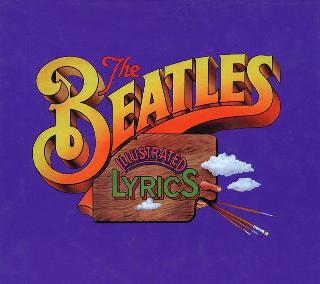Index
Home
Vorige
Sun King
Composer(s) : Lennon and McCartney
Year : 1969
Chords/Tabs: Sun King
Notes on "Sun King" (SK)
KEY E Major
METER 4/4
FORM [Part A] Intro -> Verse (instrumental) ->
[Part B] Refrain -> Bridge -> Refrain' ->
[Part A'] Verse (sung) (w/complete ending)
GENERAL POINTS OF INTEREST
Style and Form
- "Sun King" (SK) makes an uncanny companion piece for
"Because"
in the
way they share a similar sustained and paradoxically relaxed-while-ecstatic
affect. I know very well that the medley begins not with
"Because" but
rather with
"You Never Give Me Your Money;"
you don't need to remind me :-)
Still, I cannot help responding to the neat ABA symmetry created by the
specific sequencing of the three aforementioned tracks.
- SK also amply demonstrates John's often ingenious approach to form.
The track is built up from a small number of short phrases or sections
that are flexibly repeated and sequenced in the manner mosaic tiles. The
larger form of the track is a kind of miniaturized "bonsai medley," with
a discrete minature song in the middle section that is surrounded on both
sides by unusually heavy wrapping of the verse-like outer sections, which
by themselves don't quite make up a whole song, minature or otherwise.
The mental picture is one of the small hamburger with a very large roll;
sort of the opposite of a recent TIME magazine cover photo for an article
about the current fad over high protein/fat, low carbo diets.
Melody and Harmony
- With the focus here on mood and chord changes, the tune plays a
secondary role.
- The relatively high quotient of chords containing freely dissonant
embellishment (such as the added 6th) simultaneously conjures both a
jazzy, luxurious flavor and a can't-be-bothered ("nothing's going to
change my world") attitude.
- The high level key scheme of E Major -> C Major -> E Major gives
further side-2 exposure to the key of C per se, as well as exposing
another 3rd-related key relationship that bears analogy to the A Major
-> C Major gambit that so pervades the medley overall.
- N.B. that key schemes based on 3rds rather than the traditional circle
of fifths or fourths almost always bring one or more of the Beatle-beloved
chromatic cross-relations in their wake. In our current example, the key
of E has four sharps in its signature, the key of C has none.
- Historically, such key schemes became increasingly popular in the 19th
century as a reaction to what had become a painfully predictable I -> V
or IV key scheme "architecture" during the preceding so-called Classical
period. Whereas Mozart or Haydn would virtually never use the 3rd as a
key relation, Beethoven uses it increasingly from middle period onward,
during the period from Schubert to Brahms, the 3rd-based architecture
becomes sufficiently prominent to evolve into a new cliche on its own.
Arrangement
- The backing track is dominated by two guitar parts, a very prominently
mixed bass, and drums. An overlay of cricket-like night sounds and
some organ-like synthesizer work rounds out the picture.
- As almost always, attention to detail is manifest and spread throughout:
Part A:
- Completely instrumental; no vocals.
- Night sounds, which originated as part of the collage of effects used
in the previous track's long fadeout, plus a very soft roll on the
cymbals anticpate the actual start of the music.
- High hat cymbal work is added to the drum part starting after the
outro.
- The crickets are rapidly faded out for good at the end of the second
repeat of the Verse phrase.
- The lead guitar part opts for the rhetorical emphasis of slow triplets
for the third repeat of the Verse phrase.
- And right near the end of this part of the song is a small bit (less than
a whole word) of studio chat caught on the far left channel.
Part B:
- Chordal vocals on the phoneme "ah ..." pressage the start of this
section, and this vocal texture remains pretty much the same for the
rest of the track, all the way through the following Part A'.
- Backing texture is filled out by some kind of electric keyboard
instrument.
- There is yet another change in drumming pattern.
- John's double-tracked lead vocal breaks away slightly from the
backers during the last two phrases of this section. Similarly,
the backing vocals have a melodic swell that cascades "over" John's
lead in the final phrase.
Part A':
- Chordal vocals continue here but switch to an uncannily persuasive
sounding albeit nonsensical jumble of Italian and Spanish.
- The drumming sounds different on each of the two stereo channels,
implying either a double track effect or an "extreme stereo" recording
of the drums for this section (compare with the drum solo on "The End").
- The scanning of the words develops the slow triplets idea introduced
at the end of Part A.
SECTION-BY-SECTION WALKTHROUGH
[Part A]
Intro
- The intro is four measures long and consists of vamping on an added-sixth
enhanced I chord of the home key:
--------------- 2x --------------
|E added 6th |- |
E: I
- The arrangement is mechanically intricate in spite (because?) of the static
harmony, and divides the phrase into two identical halves. Consider this
our first example of mosaic-like formal tiling in this song.
Verse
- The Verse presents three times in a row a "two tile" pattern created
by placing an harmonically convergent two measures in front of the
intro's tile:
|f#7 |- & B13 |E added 6th |- |
E: ii V I
- All three chord are embellished and the chord change on the fourth beat
of the second measure is a specific harmonic rhythm you don't see much of
in the songs of the Beatles.
- I hear a chromatic upward lick from F# -> G -> G# played out over the
B Major chord, though it never seems to be quite articulated outright.
[Part B]
Refrain
- The transition to Part B of the song begins with an abrupt change
of key and texture. Coming off the settled and complacent E Major flavor
of Part A, we are confronted at this point with two measures worth of a
G11 chord. The tempo remains constant, rhythmic activity comes
to a halt during these measures. There is no pivot modulation here,
just an immediate change of key:
|G11 |- |
C: V
- Yes, that G11 sure looks and sounds like an F Major triad superimposed
on the G Major chord. Nevertheless the function of this chord as a
"Dominant" for the key of C is audibly clear.
- I label this next section a "Refrain" because it's the only place in
the song that we hear the title phrase. The mosaic formal approach
continues here with this harmonically open four measure phrase repeated
twice in a row:
|C |- Major 7th |G |A |
C: I V V-of-V-of-V
Bridge
- The mini bridge of this section is four measures long and, like the
intro above, is built out of a 2-measure tile that it repeated immediately:
--------------- 2X --------------
|F |D |
IV V-of-V
- While V-of-V-of-V (sic!) was an ususual enough by itself as the choice of
harmonic target for the previous section, it's delayed resolution by way
of the intervening IV chord makes for a tangy series of root movements by
3rd and a corresponding chain of cross relations.
- Note the chromatic downward lick in the keyboard part in this section.
Refrain'
- The last phrase of this section is an harmonic variation of the earlier
Refrain phrase modified to end up on F:
|C |- Major 7th |- Dominant 7th |F |
I V-of-IV IV
E: flat II
- You can trace yet another downward chromatic scale fragement over the
course of this phrase; C -> B -> Bb -> A.
[Part A']
Final Verse
- The modulation back to E Major for the final part of the song is only
slightly less abrupt than how we got from E to C in the first place.
In terms of local motion, the move from F Major to f#7 is a
matter of typical surprise chromatic voice leading. On a more
structural level, I hear a "modulation" here pivoting on the F chord
as though it were the Nepolitan (flat II) chord of the new key. For
an earlier example of the same gambit by Mr. Lennon check out "You're
Going To Lose That Girl."
- The two-tile Verse phrase is repeated here three times in a row as
it was in Part A. The first of these iterations is curiously the one
place in the song where the phrase is started off with an A in the bass
instead of F sharp. This makes the chord in question sound as though
it were a IV chord (A Major) with an added sixth. I prefer to label
it as still an f#7 chord, but one placed in the first, 6/5, inversion.
I believe this inversion was used because it maded a better transition
from the F Major chord preceding; i.e. placing the A in the bass avoids
what would have been an awkward sounding upward chromatic move in the
bassline at the point.
SOME FINAL THOUGHTS
- The use of Spanish/Italian gibberish for the lyrics of the final
part of this song is rather unique even for the Beatles.
- Quite separate from his penchant for Lewis Carroll style Jaberwocky
wordplay, John clearly also had a longstanding flair for what Homer
Simpson might call "funny talk." Off the top of my head I think of
his speaking pigeon German in the bathtub scene of "A Hard Days Night,"
his off the cuff "translation" on BBC radio of the same film's title
into Portuguese as "Krinkst die Night," or even his mumbling of nonsense
syllables at the end of "I'm So Tired."
- But what we get in "Sun King" is not quite the same thing. And in terms
of songs written by the other Beatles it doesn't bear much of a comparison
to Paul's "Michelle" either.
- In the end I am struck by just how smooth and appropriate the lyrics
sound in context. On the flippant level, I might say it's like what
Henry Higgins (of "Pygmalion"/"My Fair Lady") said about how "the French
don't really care what they say as long as they pronounce it properly."
- But I can restate the same comment to observe with more serious irony
that for the listener who understands neither Spanish nor Italian, the
question of whether or not the words make sense in literal or
even figurative translation is moot and meaningless. John's fortuitous
grasp of some of the rhythm of the two languages, the lilt of their
vowel sounds, and even a couple of real vocabluary words thrown in
for good measure, works just as well; even if it doesn't really make
"sense." Because (and here's the kicker) in the context of a song
like this, "making sense" per se is much less important than sounding
convincingly *as though* you do.
Regards,
Alan (awp@world.std.com)
---
"Pas "Bingo," Monsieur..."banco." 121999#185
---
Copyright (c) 1995 by Alan W. Pollack
All Rights Reserved
This article may be reproduced, retransmitted, redistributed and
otherwise propagated at will, provided that this notice remains
intact and in place.
Ook op Abbey Road:
(c) 2024 Serge Girard


 (c) Alan Aldrigde, The Beatles Illustrated Lyrics
(c) Alan Aldrigde, The Beatles Illustrated Lyrics